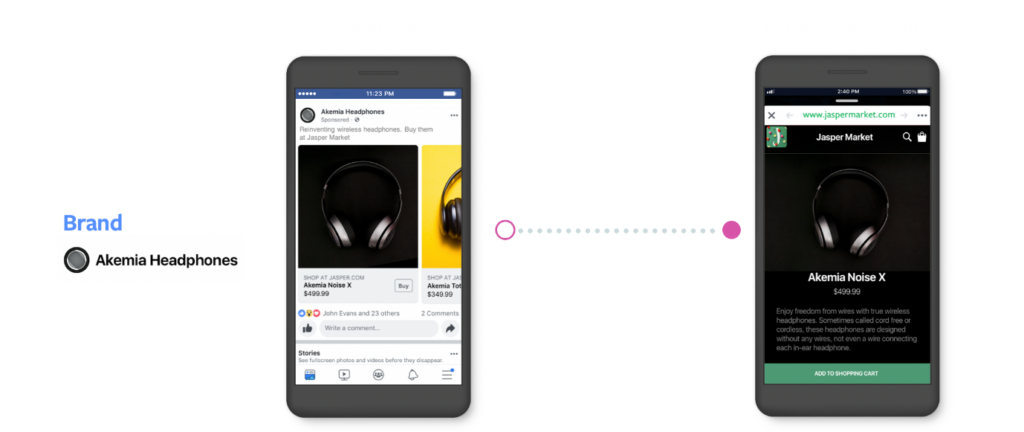The growth of e-commerce sales is nothing new, this trend has been continuing for years. For some industries (clothing, electronics/home appliances) or product types (books, music CDs) it represents a significant share of sales, and for many services, such as music streaming or VOD, it is dominant.
The year 2020, or in fact subsequent lockdowns, resulting from Covid-19, have further accelerated this trend. As a result of the restriction of access to brick and mortar stores, commerce had to move to the Internet. Everybody felt this painfully, because practically every e-commerce platform was flooded with orders, which often entailed weeks of waiting for shipments.
Marketers, seeing the situation, began to relocate their advertising budgets for activities more strongly focused on online sales. This was manifested by opening up their own e-commerce, and if this was not possible or if it was not built on a sufficient scale, they began to look for space for closer cooperation with e-retailers. It turned out, however, that in practice the possibilities are very limited. Previous cooperation in paid media was mostly limited to informing about the availability of a product or promotion at a particular seller without real verification of the sales effect.
The limited possibilities of measuring the results of individual campaigns on real sales are a big challenge in cooperation between marketers and e-retailers. The former, due to lack of detailed data, use econometric modelling, which indicates the most effective communication channels for total sales “from the big picture”. On the other hand, e-retailers are more focused on analyzing digital parameters such as post-click conversion, and the more advanced ones on attribution models. This makes it very difficult for them to find an agreement on this level.
This understanding is most difficult when cooperation is to be based on data transfer, which is often a problem within one organization. Many e-retailers are afraid to share access to dedicated views in Google Analytics or sales data, and explain this by e.g. the need to secure their know-how, a ban issued by the parent company or plans to sell them to marketers.
A certain solution to this problem, acceptable to both parties is Facebook collaborative ads. The solution has been available since 2019, but has gained more popularity in recent months.
It is based on the fact that the e-retailer provides the marketer with a fragment of his product catalog that can display dynamic ads optimized for sale to people who responded to them on the e-retailer’s website or its application.

This solution has several advantages. The most important is that the marketer receives a tool that can directly realize the sales target at the preferred retailer on an ongoing basis and based on real data. The campaign is conducted from the marketer’s advertising account so he decides which products he will promote, he has full control over the budget and sees the basic parameters such as ROAS (Return On Advertising Spend) or total sales value. The entry threshold is also not a huge barrier, because just a few, several thousand PLN per month is enough for the start and efficiency tests. Collaborative ads are available to practically everyone, you only need to contact Facebook representatives to activate such a functionality and initiate the willingness of their representatives to cooperate with the e-retailer and marketer.
On the other hand, there are also some limitations of this solution. The experience so far shows that high ROAS is achieved by campaigns that are multi-brand and multi-category, because then Facebook algorithms have space to learn which products attract the greatest attention of Internet users and generate sales on the whole product catalog. With this in mind, these types of activities should be planned in the medium term. The experience so far shows that a monthly test is enough to estimate the potential and KPI value of one e-retailer. Let’s remember that each e-retailer has its own promotional and pricing policy, different product list, store built differently, etc., which makes the experience of one partner impossible to transfer directly to another. Another issue worth emphasizing is the fact that the results are based on the default model of Facebook attribution, i.e. 1 day view, 28 day click, which with a wide communication of the brand in the Internet can assign Collaborative ads effects from other actions.
Collaborative ads is a solution that perfectly fits the current needs of marketers, because you can measure the sales effectiveness at e-retailers, who also benefit from it through a wider exposure of their store and direct sales.
However, let us remember that this action is aimed at achieving a short-term effect and works best for brands and products with high awareness. Therefore, let us avoid the temptation to transfer a large part of the marketing budget, which is focused on brand building, to sales activities. According to the meta-analysis of The Institute of Practitioners in Advertising “The Long and the Short of It”, the optimal share is around 60% of the budget for brand building and 40% for sales activities. E-retail still has a much wider spectrum of tools and data to effectively generate direct sales than a marketer. On the other hand, the e-retailer is usually not interested and does not have the resources to build brands, which it is just one of the many sellers.
It is worth remembering that Google is working on a similar solution with partner shopping campaigns, which should be available in Poland in beta version in 2021.

